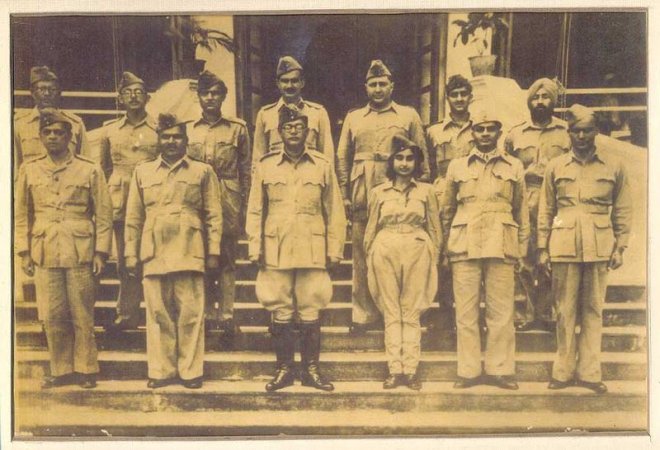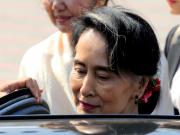
As the fateful death anniversary of Netaji Subhas Chandra Bose on August 18 is nearing, the controversy is raging once again on Indian media. Flashing news often claimed that Netaji did escape the death and survived for few years but this has become a repetitive feat every year.
The meticulously gathered archives opened last year show that on 18th August 1945, Netaji was hurriedly put on a miliatry bomber that took off from Taipei (Taiwan) enroute to Tokyo (officially) and Manchuria (unofficially) at around 2:30 PM.
At about 20 metres above the ground, "one petal of the three-petaled propeller of the left wing was suddenly broken, and the engine fell off" said a Japanese document made public last year. It crashed on the same ground, engulfing the occupants in flames, including Netaji, who was sitting just above the oil tanker.
Netaji suffered third-degree burns and was rushed to the Nanmon Branch of Taipei Army Hospital by his aide Col. Habibur Rehman of Indian National Army (Azad Hind Fauz). Japanese never referred to Netaji by his name but by 'T' due to military protocol during the war period. This has created enough ground for conspiracy theory advocates later.
Also read: Netaji's Death: Why French Secret Service Believed He Was Alive in 1947?
The Army medical officer Capt. Taneyoshi Yoshimi repeatedly told every commission that he did give injection to Netaji who was still speaking when he entered the hospital with burns all over the body. Another Japanese doctor Toyoshi Tsuruta and a Taiwanese nurse Tsan Pi Sha were also key witnesses to his death in the hospital.
The problem was Japanese army had been so secretive that they never entered his name in the records nor the time of his death accurately, leading to enough confusion and rejection of the death theory by his supporters and family members. Even the version of his aide Habibur Rehman, who chose to become a Pakistani citizen following the partition of India, was not heeded.
The controversy was actually over the timing of his death. Japanese document made public last year said, "At about 7.00 pm he died." But the doctor who attended on him said he died around 11 pm after going into coma. So, the controversy is over the timing of his death and not the death itself.
On August 22, 1945 Netaji was cremated at the Taipei Municipal crematorium, confirmed the Japanese document and the paper given to the local crematorium had the name of Ichiro Okura, not T nor Netaji's full name, because this was the patient who died around the same time in the hospital.

But further probe by the Shah Nawaz Committee into the place where Netaji was cremated shows that it was the body of a tall and bulky Indian which was not fitting in the furnace. A sure indication that it was not of a Japanese national but of Indian. Owing to military protocol and surrender of Japan just two days ago was enough for the military personnel who tried throughout to hide the real identity of their wartime friend and a political leader.
When Hiren Shah, a journalist with Mumbai's Free Press Journal, visited Taipei in September 1946 to probe the accident, the nurse, Tsan Pi Sha, showed him the ward, the bed and said:
"He died here. I was by his side..... He died on 18 August last year (1945), (Subhas) Chandra Bose... I am a surgical nurse and took care of him till he died.....I was instructed to apply olive oil all over his body and that I did...Whenever he regained briefly his consciousness, he felt thirsty. With slight groaning, he would ask for water. I gave him water several times."
When Shah asked her "So you definitely know that he is dead?", she replied, according to Shah, with a tone of rebuke: "Yes, he died. I have told everything about it. I can prove that he died."
However, Bose's family members often refused to accept the plane crash theory and demanded to conduct DNA testing, which is not possible because the body was burnt and not buried in Taiwanese crematorium. The burnt bones could not help in determining the DNA.
No wonder even Subhash Chandra Bose's daughter from Germany, Prof. Anita Pfaff has eventually agreed to the death version of Netaji and sought the Indian government to transfer her father's ashes from Renkoji temple in Tokyo to India.









